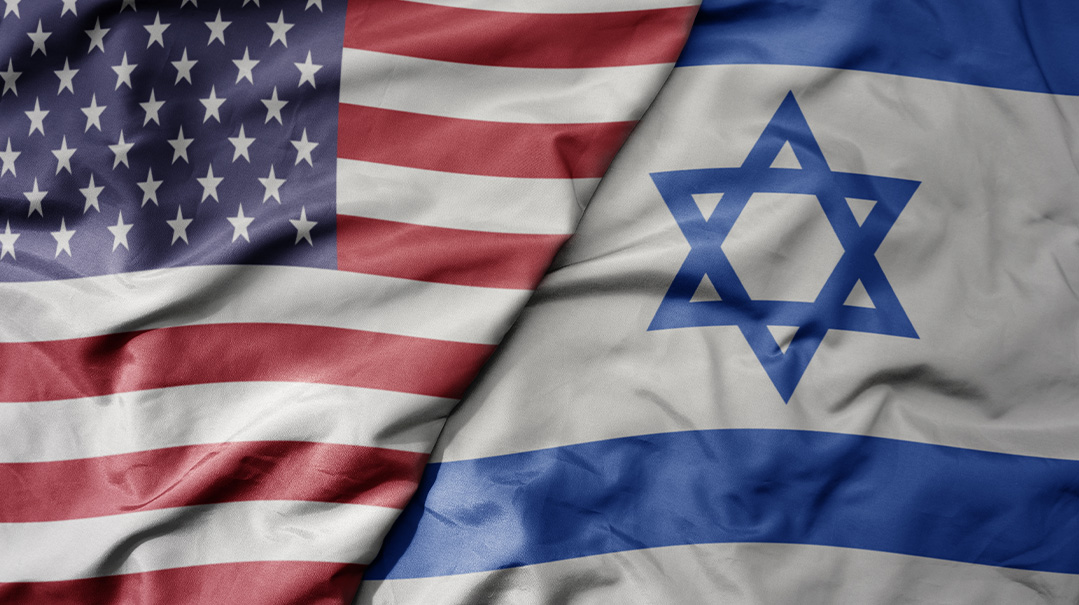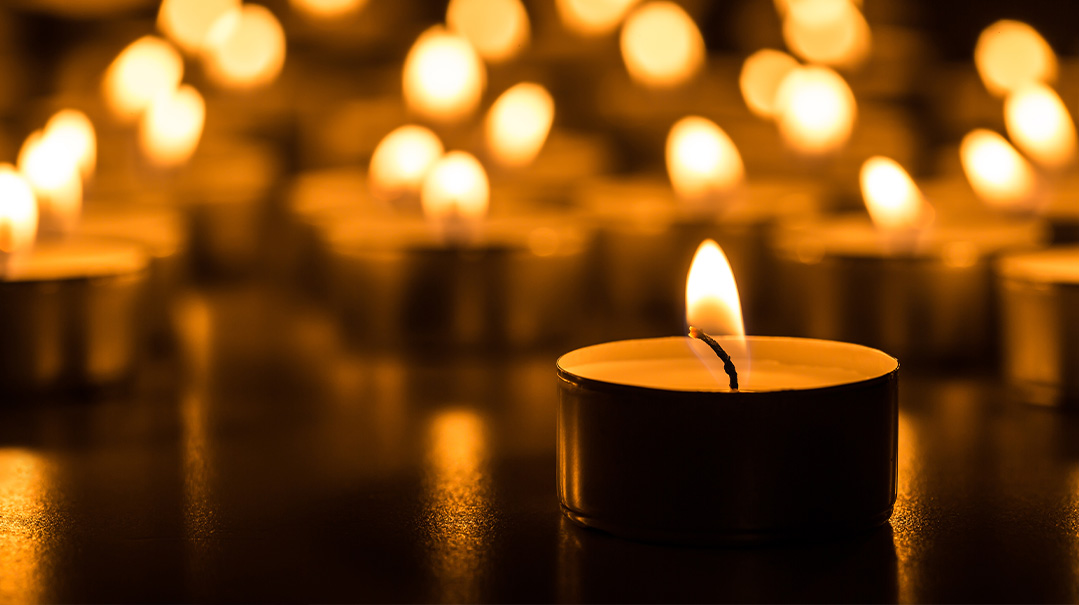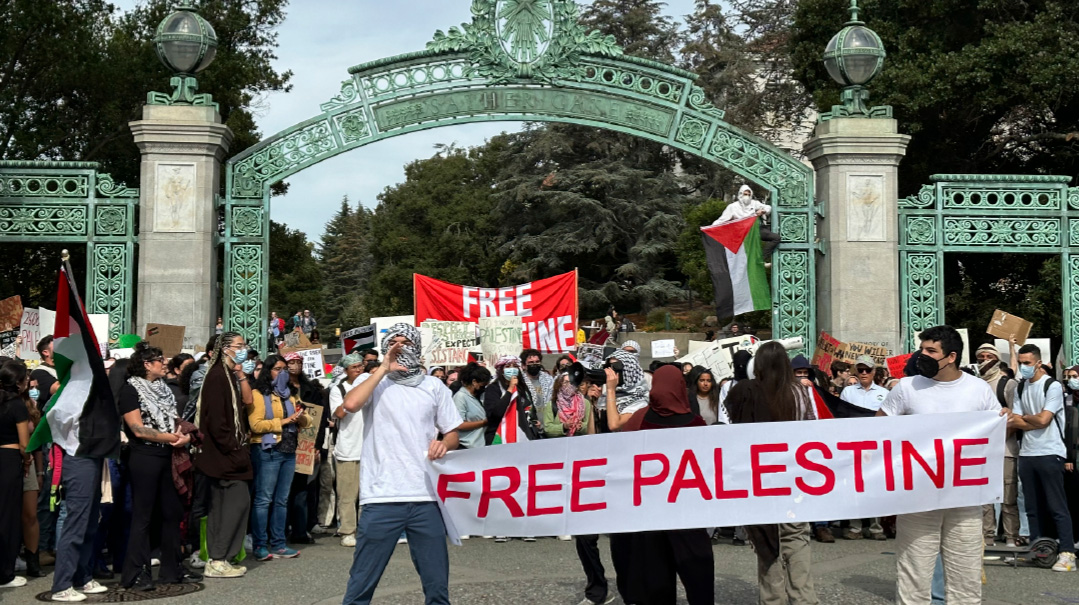The Luxury Beliefs of the Elites

The danger posed by the holders of luxury beliefs lies not only in their pernicious cultural influence
T
he major lesson that reviewer Christine Rosen extracts from Rob Henderson’s new memoir, Troubled: A Memoir of Foster Care, Family, and Social Class, is: “The people who control a great deal of our cultural and political conversations are a rarified elite with little understanding of how most people live their lives.” (I have not yet read Troubled, though I’m eager to do so. What follows draws primarily on Rosen’s review in the Free Beacon and on Henderson’s op-ed in the Wall Street Journal.)
To comprehend the gap between those elites and the vast majority of Americans, consider a recent Rasmussen survey of what the authors call “elites” — more than one post-graduate degree, an annual income of $150,000 — and a subset of those “elites,” who attended an Ivy League school, or another elite private school, such as Stanford or University of Chicago, whom Rasmussen dubs “super-elites.”
Three-quarters of the elites and nearly 90 percent of the super elites describe their personal incomes as on the upswing, while almost none describe their incomes as on the decline. For all Americans, however, nearly twice as many view their income as worsening as view their financial situation as improving — 40 percent to 20 percent.
Despite having eventually made it to Yale as an undergraduate in his mid-twenties and later earning a PhD in psychology at Cambridge University, Henderson most certainly did not stem from the elite class from which so many of his classmates came. Students at Yale from families in the upper 1 percent of wealth are more numerous than those from the bottom 60 percent.
One of Henderson’s Yale classmates, who had attended Phillips Exeter Academy, America’s top prep school, once lectured Henderson on his white privilege — even though he is actually half Asian and half Hispanic. Yet it would take a certain obliviousness to label Henderson a child of privilege. One of his earliest memories is of his drug-addict mother being pulled away from him in handcuffs and hauled off to jail, when he was three. He never knew his father.
After that, he was shuttled between various foster homes, none of them stable, until he joined the US Air Force after high school. The discipline of the military helped him overcome some of the chaos that had characterized his life until then. But many of the old demons remained, including his penchant for self-medicating with alcohol, and he ended up in a detox program, where a talented therapist helped him work through some of those demons.
One of the central messages of Henderson’s memoir is that a non-stable childhood family life is not just bad because it hurts your chances of getting into an elite college or attaining a high-paying job later in life, but also because those raised in such an environment experience “pain that etches itself into their bodies and brains and propels them to do things in the pursuit of relief that often inflict even more harm.”
Given their difference in backgrounds, Henderson found many of the social rituals of his classmates incomprehensible. One example was when the Yale campus erupted in hysteria over an email from Erika Christakis to the students of Silliman residential college, of which she served as co-master with her husband Nicholas, suggesting that they were old enough to work out themselves which Halloween costumes to wear, without asking the administration to issue an elaborate set of rules to avoid “microaggressions” or “cultural appropriation” — e.g., a white student wearing a sombrero. After the childhood and teenage years he experienced, a fellow student in a sombrero did not seem like such a big deal to Henderson.
Erika was eventually force to resign her position in Silliman and on the Yale faculty, much to Henderson’s disappointment, as he had been eager to take her course on early childhood development. Meanwhile, the black undergraduate who confronted Nicholas Christakis in the Silliman courtyard, in an expletive-laden tirade, in front of a group of students cheering her on, was given an award for extracurricular excellence at the next Yale graduation.
Henderson offers an invaluable term to describe the opinions expressed so fiercely and with no tolerance of opposing views by his fellow undergrads: “luxury beliefs.” Luxury beliefs, as Henderson defines them, “confer status on the upper class at little cost, while often inflicting costs on the lower classes.” The conspicuous displays of wealth and leisure activities that broadcast elite status in Thorstein Veblen’s time have been replaced by opinions and beliefs that give proof of one’s elite education. After all, Henderson notes ironically, how many non-Ivy-League-educated Americans can easily toss off terms like “cisgender” or “heteronormative”?
Mantras such as “defund the police” are luxury beliefs because their impact on those living in gated communities or the most affluent neighborhoods is likely to be negligible. Henderson comments about the policies implemented to combat white privilege, “It won’t be Yale graduates who are harmed. Poor white people will bear the brunt.”
He recounts the story of a refugee from the North Korean police state, attending Columbia University, who raised concerns about the anti-free speech movement on campus, only to be taunted with “Go back to Pyongyang” on a social media site for Ivy League students. Normally, nothing will earn faster exile to social media purgatory than telling an immigrant, “Go back to where you came from,” but this particular refugee was deemed deserving of insult, writes Henderson, because she “undermined these people’s view of themselves as morally righteous.”
Incidentally, I would rank as near the top of “luxury beliefs” the familiar chants about Israeli genocide and apartheid. They cost their proponents nothing, yet effectively broadcast one’s moral righteousness and humanity, not to mention elite education, especially when terms like settler-colonialism and intersectionality are thrown into the mix.
Henderson is primarily concerned with the way that bad ideas — e.g., dismissal of matrimony and monogamy as passé, decriminalization of drugs — filter downstream in the culture, where they wreak havoc. As Charles Murray thoroughly documents in Breaking Apart, rates of marriage, children living in two-parent homes, and attendance at religious services have remained more or less constant in the most affluent quintile of the population, while plummeting in the lower quintiles. But on elite campuses, marriage is more likely to be portrayed as a prison for women, just as the same students for whom the words “capitalist oppression” roll trippingly off their tongues can be found the same day lining up for interviews with Goldman Sachs.
But the danger posed by the holders of luxury beliefs lies not only in their pernicious cultural influence. Holders of those views are quite comfortable with the use of coercion to advance their beliefs. Four-fifths of the super elites, interviewed in the Rasmussen poll cited above, would ban gas-powered cars. Just under 90 percent support strict rationing of meat, gas, and electricity, and 70 percent would ban all nonessential air travel.
The impact of these restrictions on the most affluent would likely be relatively small. They can afford electric cars, and would buy carbon offsets to circumvent some of the most onerous rationing or purchase them on the black market. And dollars to donuts that their air travel would be deemed necessary. The impact of such policies on the less affluent doesn’t figure into their calculations.
Elite campuses have been focal points for the limitations on free speech, and over half of the super elites educated on those campuses describe Americans as possessing too much freedom. That goes with a general contempt for markets, which allocate equal weight to the choices of the unenlightened and the enlightened.
That concern with “too much” freedom goes together with a remarkable trust in government among 70 percent of the elites and 90 percent of the super elites. Government is beneficent, in their eyes, because it can force people to do what the enlightened have determined is good. The elites know that their hands will be on the levers of coercion, particularly administrative agencies. (I would wager that the majority of those lower-level staffers staging mini-rebellions in the White House and the State Department over American support for Israel’s war on Hamas are holders of elite credentials.) Ronald Reagan’s quip, “The nine most terrifying words in the English language are, ‘I’m from the government, and I’m here to help,’ ” does not resonate with the elites.
SIXTY YEARS BEFORE Rob Henderson first stepped onto the Yale campus, another man already in his mid-twenties entered Harvard as an undergraduate. Like Henderson, Thomas Sowell came from a deprived background and served in the military before entering college. He was born in the Jim-Crow-era South, in a home without electricity, and served in the Marines during the Korean War, after dropping out of high school.
The 1969 black student riots at Cornell, where Sowell was an economics professor, and subsequent pressure at UCLA to lower his standards for students, soured Sowell on academia, which he left for a position as senior fellow at the Hoover Institution almost half a century ago.
Over 50 years and almost 40 books, most still in print and many of them standard texts in economics, and ten volumes of collected columns, Sowell has leveled a sustained critique at the dominant intellectual doctrines of our day, in particular those of his fellow black intellectuals, whom he views as having spectacularly failed the black masses by advocating for policies that may serve their interests but not those of the large majority of American blacks. (Only about one-third of his writing concerns issues of race, and he has penned classic works in intellectual, social, and economic history.) Jason Riley’s intellectual biography of Sowell is appropriately titled Maverick.
In a short new work, Social Justice Fallacies, which I would commend to every college student and social justice warrior, Sowell fleshes out many of Henderson’s observations, including the detachment of elite theorists from the lives of those whom they purport to advocate, and their sometimes subtle, sometimes not, contempt for those whom they view as their inferiors.
The second chapter compares the Progressive movement of the early decades of the 20th century to present-day progressives. At first glance, it would appear that little connects the two groups, apart from their position on the political left of their day. A strong streak of racial determinism characterized the early progressives, and many of their leading lights fretted about the disastrous impact of an influx of people of inferior races to America. By contrast, today’s progressives start from the premise that there are no differences between races and that all differential outcomes are a result of systemic racism.
In the earlier period, Professor Edward Ross, the chairman of the American Sociological Society, warned that America was headed toward “race suicide” by virtue of being inundated by people of “inferior types.” American universities and colleges taught hundreds of courses in eugenics, defined as the reduction or prevention of the survival of people considered genetically inferior. The most famous economist of the 20th century, John Maynard Keynes, was founder of the Eugenics Society at Cambridge.
Irving Fisher of Yale, the leading monetary economist of the period, advocated for the isolation or sterilization of those inferior types. Or as Justice Oliver Wendell Holmes put it, “Three generations of idiots are enough.” Sowell remarks upon how casually Fisher spoke of imprisonment of those who had committed no crime and the denial of normal life to all regarded as inferior. Not by accident did Hitler yemach shemo term a work on eugenics by Madison Grant, a leading conservationist and advocate for national parks and the protection of endangered species, his Bible.
At first glance, today’s progressives could not seem further removed from their namesakes. They are the opposite of racial determinists. In the modern progressive creed, all differences in outcomes between people of different races can have one and only one explanation: discrimination by the majority group.
Despite the opposite views on race, Sowell finds important continuities between the progressive movement of the early 20th century and that of today. Today’s progressives share, according to Sowell, their predecessors’ aversion to confronting empirical evidence that challenges their fixed verities, and a similar inclination to respond to empirical challenges with ad hominem insults — racist being the most powerful — rather than with counter-arguments and evidence.
And they are similarly inclined to use government power to coerce the less enlightened to behave in accord with their “expert” opinions, and too frequently oblivious to or unconcerned with the impact of their policy prescriptions on those constituting the “lower orders,” in their minds.
Woodrow Wilson, perhaps the leading figure of the Progressive era, served as president of Princeton before being elected president. Like many of his fellow progressives, he was an unabashed racist who insisted that black employees in government offices be physically segregated.
But what joins him to present-day progressives is his enormous confidence in government by experts. He presided over a massive expansion of the federal government and the creation of many of the largest administrative agencies, run by “experts.” He viewed the Constitution as outmoded for a modern age. But not to worry, government agencies headed by experts would usher in a “new freedom,” albeit not quite the freedom of a constitution limiting the power of government and enshrining individual rights.
Today, DEI bureaucracies on almost every campus seek to enforce right-thinking and enter into every aspect of university governance, including faculty hiring. Those mushrooming bureaucracies account for a large part in the explosion in higher education costs.
Sowell takes aim at the racial theories of the early progressives and contemporary ones alike. He seeks to empirically refute the claim that each race has a different “ceiling” for intelligence. (If anecdotes were data, his own genius would serve as refutation.) He met with and debated Professor Albert Jensen, one of the leading modern proponents of that view.
Sowell argues that environment, not inherent ceilings, underlies much of the difference in IQ between races. For instance, those raised in the Hebrides Isles and the hill country of Kentucky, though of pure Anglo-Saxon stock, have IQs comparable to American blacks. And like American blacks, their IQs tend to decline from childhood to adulthood. Social isolation appears to be the key. Sowell cites another study that blacks raised by white adoptive parents had IQs six points above the national average.
As an amusing example of the fallibility of IQ tests as measures of inherent capabilities, Sowell quotes Carl Brigham, who developed the SAT test. Brigham claimed on the basis of army mental tests administered in World War I that the myth that Jews are on average highly intelligent had been refuted. At least he had the good grace to admit by 1930, as Jews excelled on standardized tests, that his earlier conclusions had been without merit, and had failed to take into account that most immigrant children were raised in non-English-speaking homes.
Sowell is equally effective skewering the present-day progressive belief that all differences in outcomes are explained as products of racial discrimination. He chafes at the resultant cult of victimization that stands in the way of examination of cultural behavioral factors that prevent black advancement.
He insists that behaviors count and explain a great deal of the differences in income levels between different racial groups. For instance, black married couples have experienced poverty rates of less than 10 percent for decades, which is less than the national poverty rate for all families. And black married couples have higher income levels than white single-parent families. The problem is that black marriage rates overall are lower.
It is often said that the high illegitimacy rate in the black community is attributable to the “legacy of slavery.” But for nearly a century after slavery, the rates were relatively low. In 1940, they were one-quarter of what they are today. Sowell suggests that the rapid expansion of the welfare state in the 1960s explains much of that rise, as births to single mothers have also risen rapidly in Sweden, the welfare paradise, where there is no legacy of slavery.
Evidence cited to show discrimination against black children by “white supremacists” — e.g., discipline rates two and a half times those of white students — proves the opposite, Sowell suggests. For white students are themselves twice as likely to be disciplined as Asian students. Perhaps, then, disruptive behavior, rather than discrimination, explains differential rates of discipline. To get rid of school discipline in the name of equity leads to schools in which it is impossible to learn, and ends up harming black students, he argues. Attacks on discriminatory school discipline is thus another one of those “luxury beliefs,” like defunding the police.
One of the major causes of the burst housing bubble of 2007, which Sowell predicted, was government pressure on lenders to greatly reduce credit requirements for mortgages. The regulators’ theory was that blacks were being discriminated against in the mortgage market, as evidenced by the higher rate of rejection for black mortgage applicants. The only problem with the discrimination hypothesis, Sowell shows, was that black-owned banks rejected black mortgage applicants at even higher rates.
The hypothesis that different income levels are exclusively a function of discrimination founders on the fact that other minority groups — e.g., Asians — have, on average, incomes well above the medium national income, and dark-skinned Asian Indians earn on average $39,000 more per annum than full-time, year-round white workers.
The victimization narrative, in Sowell’s eyes, is not only unhelpful but damaging to blacks, as it shifts the focus from one of encouraging the types of behaviors that are associated with success. In the immediate wake of slavery, and for nearly a century afterwards, almost all graduates of all-black Dunbar High in Washington, D.C., went on to college. Black and Hispanic kids in New York City charter schools are six times as likely to pass city math proficiency exams as their counterparts in the regular public schools. Why? Sowell wants to know.
Focusing on the behaviors that foster success rather than wallowing in a narrative of discrimination — which he personally experienced in his younger years and does not deny still exists today — is for Sowell the key to black advancement. And that requires more empirical study and less airy theorizing.
Many of the panaceas that derive from au courant theories have been conclusively refuted on the ground. Black political power in most of America’s largest cities, for instance, has done little to change the lives of the vast majority of black citizens. And affirmative action has, in Sowell’s view, reinforced stereotypes of black inferiority, among whites and, even worse, among blacks themselves, while doing little to help inner city blacks.
Without a clear-eyed attention to empirical evidence and an openness to debate based on facts and logic, in Sowell’s terminology, we are forever consigned to the realm of “luxury beliefs.”
(Originally featured in Mishpacha, Issue 1003. Yonoson Rosenblum may be contacted directly at rosenblum@mishpacha.com)
Oops! We could not locate your form.







